The start of a New Year brings the desire to try something new; do something different; go beyond the ordinary. As January comes to an end, the day dream of a spring break vacation begins to focus into reality. Students everywhere are crossing days off the calendar; dreaming of sun, water and fresh air; anticipating a much-needed break from books, homework and well-meaning parents. There’s no doubt about it, spring break planning is upon us.
But wait. Before you confirm that all-inclusive Cancun getaway, freeze that finger. Pause that Panama City beach itinerary. Instead, consider a break that will produce more than tan lines. This spring, commit to do something beyond the ordinary. A break that will strengthen your body, push your mind, and teach you skills you’ll actually use in your everyday life.
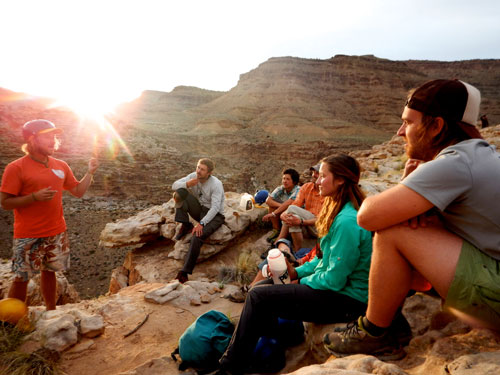
Students get an outdoor lesson amongst the vast canyons in the southwest. Photo by Kelly Crandall
A variety of alternative spring break options exist throughout the country and the world. Most alternative breaks center on the desire to learn, grow and contribute to the community. Boston College sponsored one of the first official alternative spring break trips in 1979, when student Gregg Cassin and nineteen peers raised enough money travel to rural Appalachia, where they spent eight days repairing homes, working on farms and building relationships with the community.
On the one hand, alternative breaks offer a much-needed respite from the classroom and pressures of everyday life, but on the other, they also help to develop a sense of independence, self-sufficiency and environmental and social awareness. So, let’s take a closer look at what an alternative spring break is all about. To be more specific: why choose an alternative spring break with Outward Bound?
Serve the community.
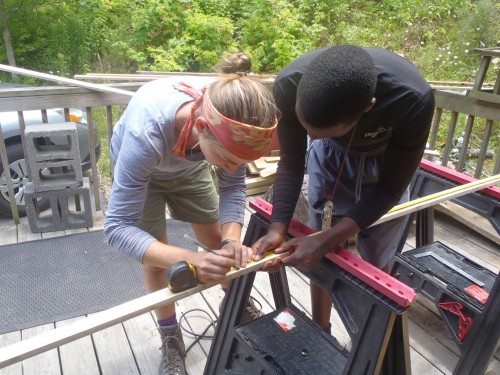
Students complete a service project while on course with Outward Bound.
Most alternative spring breaks focus on direct service to the community. Every Outward Bound expedition incorporates service during the journey. This might mean building houses, improving trails, working with children, cleaning up beaches or even volunteering at schools. No matter what type of expedition you choose, you can expect to spend a portion of your time giving back.
Learn about the natural world and environment.
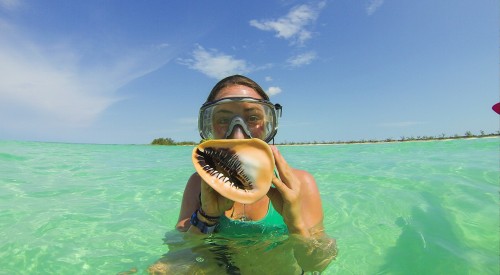
Students learn and explore in the warm waters of the Bahamas. Photo by Outward Bound partner, the Island School.
On a spring break trip with Outward Bound, students get up close and personal with the natural world. That means learning to identify the plants, birds and mammals around them, learning to read wind, river, and ocean currents, and getting familiar with the history of the land. While casual Bahamas spring breakers might wonder about the pink sand under their towel, the crew on the Outward Bound Bahamas Sailing expedition will learn its source. There is no better way to get a practical science lesson than in middle of the wilderness while experiencing it. This is the kind of learning that sticks.
Get a better understanding of complex social and cultural dynamics.
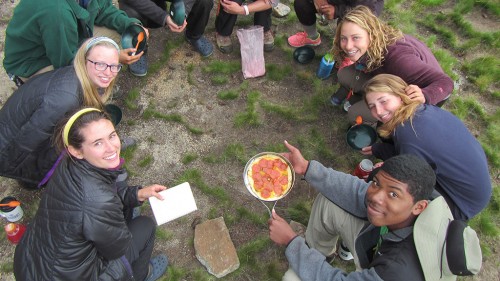
Students work together to cook a group dinner while on course.
Students on alternative spring breaks choose to spend a week or more in a challenging natural environment, surrounded by new people. As the group works toward common goals, they learn to appreciate the differences among them and celebrate the commonalities. By interacting with a variety of diverse individuals in a variety of unique environments, students gain real-life experience negotiating complex social and cultural situations.
Build skills for life.
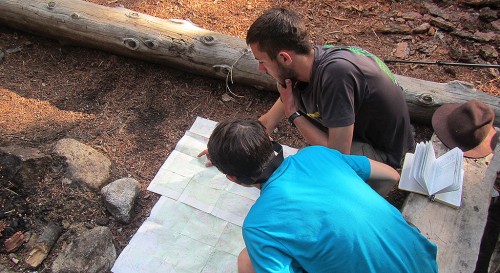
Students navigate route while on course in Yosemite.
Students who embark on an Outward Bound spring break practice new skills every day of their course. Whether they are learning how to navigate, lead a group discussion, purify water, pack a backpack or cook in the wilderness, Outward Bound students are acquiring new and valuable skills. The “soft” skills learned on course (such as giving and receiving feedback, resolving conflicts and properly assessing a situation) help students succeed at home, in school and in future careers.
Participate in group discussions and personal reflection.
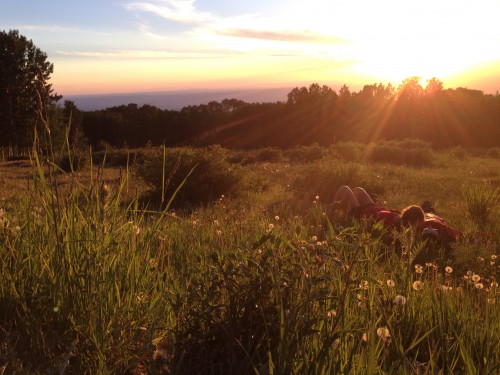
A student takes time to reflect while on course in the southwest.
While the main “reflection activity” in Cancun might be peering over the edge of an infinity pool, students on Outward Bound spring break expeditions can expect to have some time set aside to think. With dedicated time for journaling, small and large group discussions and an opportunity for a “solo” experience, students come away with some new realizations, new goals and a game plan for the future.
Improve your physical fitness.
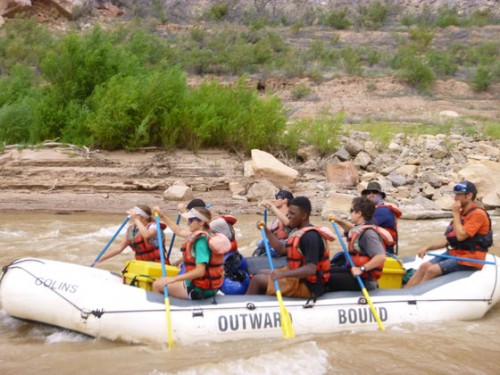
Students work hard while rafting through rapids in the southwest.
Outward Bound students move their bodies more than ten hours a day. At the end of a long day of cross country skiing, hiking, paddling, rowing or climbing, students have burned thousands of calories. Their muscles are sore, their bodies are tired and the entire crew is looking forward to sharing a hot meal together. Students often return home with improved cardiovascular endurance and mental stamina – not to mention some new muscle definition!
Earn a sense of accomplishment (and perhaps a good story for a college admissions essay).
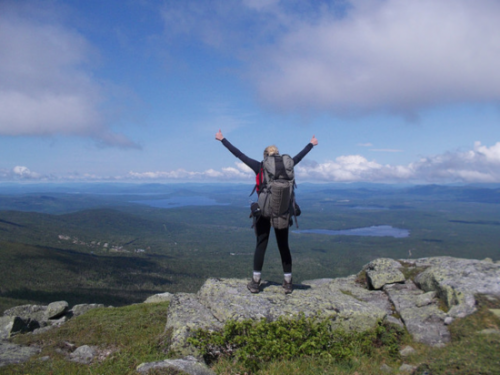
A student celebrates her accomplishments in the Appalachians while on course with Outward Bound.
“Volleyball at the beach” is not necessarily resume or college application material. A wilderness expedition with Outward Bound, on the other hand, is a feat worth bragging about. Students who complete an expedition with Outward Bound are proud of the obstacles they’ve overcome and the mental toughness they’ve developed. When it comes time to write an essay or apply for a job or program, Outward Bound alumni often have substantial, meaningful things to say. And college admissions officers and employers are often impressed.
See a pristine, natural place.
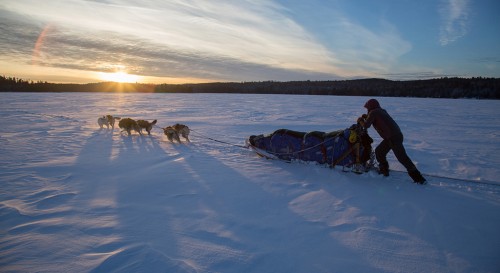
A student explores the Boundary Waters by dogsled while on course with Outward Bound. Photo by Larry Mishkar.
An alternative spring break with Outward Bound takes students into wild, rugged places that they might not otherwise see. In wilderness areas like the Boundary Waters of Minnesota, students might go all week without hearing a plane, car or motorized vehicle. The image of a still alpine lake or a mountain sunrise is a memory students will cherish long after their course has ended.
Spring is coming. March and April will be here before we know it. Now is the time to start thinking, planning and dreaming. So, what is it going to be? Baking in the sun or a steadfast commitment to community, personal development and strength of character? Although there are many alternative spring break options to consider, we think a week with Outward Bound is an excellent choice. Choose from a rich selection of dates and activities, including backpacking in the Blue Ridge Mountains, rock climbing and yoga in the Oregon backcountry, sailing the Florida Keys, canyoneering in the Southwest, or even dogsledding in the Boundary Waters of Minnesota.




